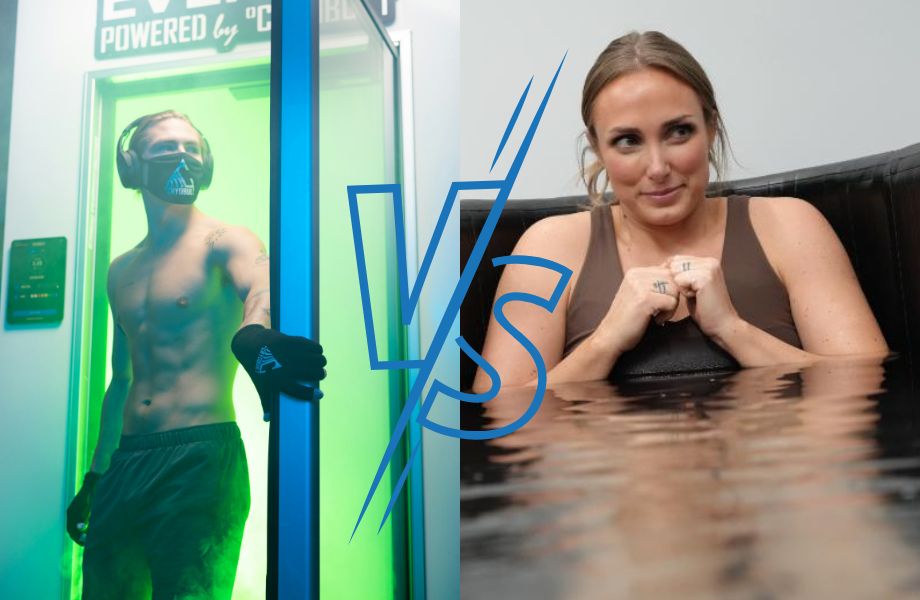We test and review fitness products based on an independent, multi-point methodology. If you use our links to purchase something, we may earn a commission. Read our disclosures.
Cold therapy and cold water immersion have ironically become hot trends over the past few years as people continue to search for the best muscle recovery tools available on the market to improve their health and wellness.
In addition to cold plunge tubs, a newer form of cold exposure is becoming popular—whole-body cryotherapy. In a cryotherapy session, your entire body is exposed to very cold air for a short time.
As an athlete and an Olympian, I’ve used cold therapy on-and-off throughout my 25-year-long weightlifting career and have experienced several benefits from cold therapy. In this comparison article, I’ll compare cryotherapy vs cold plunges—the similarities, the key differences, and who will benefit most from each recovery method.
Let’s discover the health benefits of these two freezing recovery tools. So get ready, turn down the thermostat, and let’s get cold.
What Is Cryotherapy?
At its root, cryotherapy is just another term for cold therapy, or exposure to cold temperatures to reap purported health benefits like muscle recovery and reduced inflammation (more on these later).
However, cryotherapy typically refers to a method of cold therapy where a user is exposed to extremely cold air for a few minutes—typically 3 or 4 minutes. We’re not talking about just barely freezing temperatures, either. These are extremely cold temperatures, ranging from -50 degrees to -200 degrees Fahrenheit or lower—well below freezing temperatures. To reach these temperatures, the walls of the chambers are pumped with liquid nitrogen, creating a quick cooling effect.
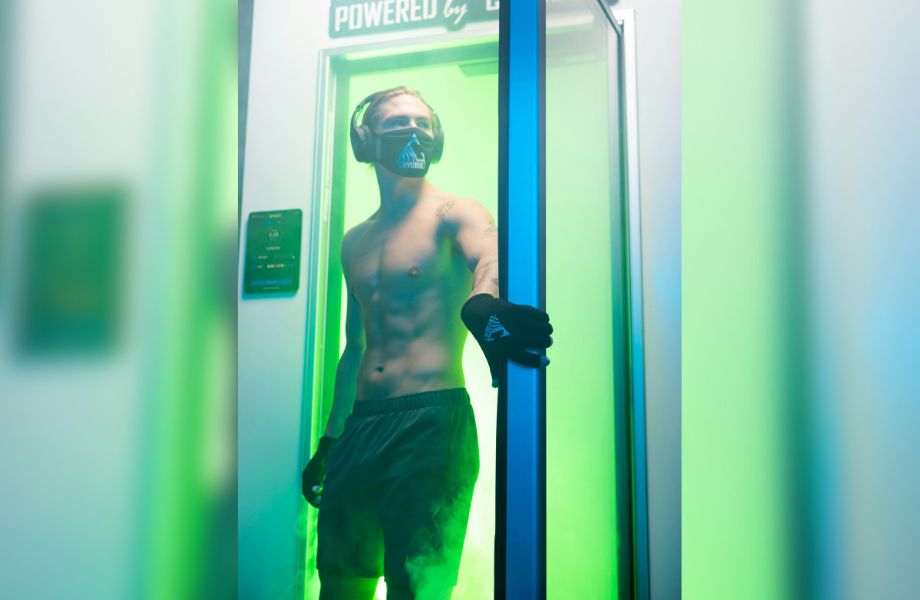
Because of the extreme cold, users are often outfitted with felt boots or gloves to reduce any chance of frostbite. Garments should be cotton, dry, and comfortable. The user is enclosed in a standing cryotherapy chamber (commonly known as a cryo chamber), where the temperature drops drastically; the user stays for about 3 minutes and then is released from the chamber. These chambers are pricey, so most people will have to drive to a wellness center for access.
What Is a Cold Plunge?
Cold plunging, or cold water immersion, is another form of cold therapy where the user sits or lays down in a tub filled with cold or icy water. They can be as simple as a DIY cold plunge using a stock tank and ice packs or cubes, or as refined as insulated containers with filtration systems and water chillers.
Cold plunge tubs usually sit at a temperature around 50 degrees Fahrenheit, which aren’t as cold as cryo-chambers, but are still quite chilly. Because these temperatures are higher, typically people will stay in an ice bath for longer periods of time—between 5 and 15 minutes, depending on the temperature of the water and the tolerance of the user.
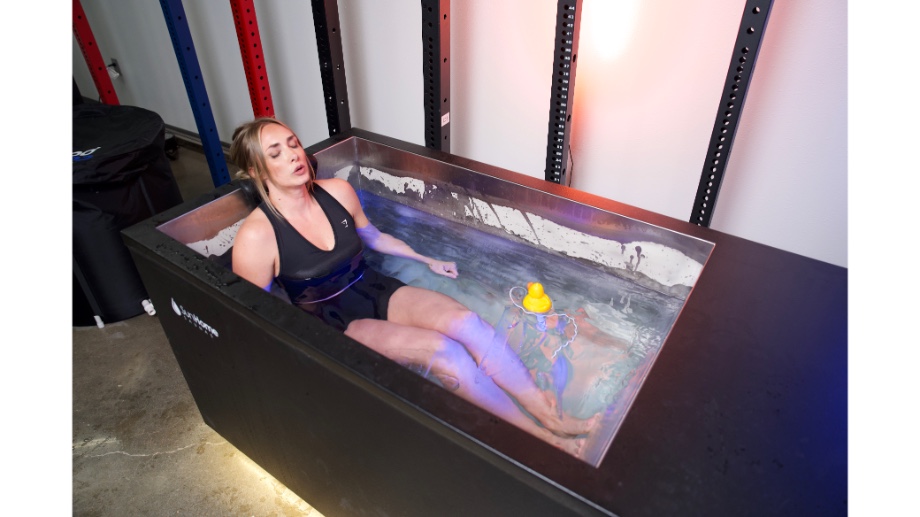
Benefits of Cryotherapy and Cold Therapy
Before we get into the potential health benefits, it’s important to note that cold therapy as a whole needs more research done to truly understand the full benefits of cold therapy. Even moreso, the research for whole-body cryotherapy and cryo chambers is scarce. Still, there have been some purported benefits from the few studies and reviews done with cold therapy. We’ll take a look at some of the cryotherapy and ice bath benefits seen from both recovery methods.
Can Help With Pain Relief
Lots of people suffer from chronic pain, particular in the lower back. Whole-body cryotherapy has been shown to help with people’s perceived sense of pain. In a 2015 randomized control trial1, patients were given multiple cryo-chamber sessions, one group with a chamber set at -67 degrees Celsius (-88 degrees Fahrenheit), and another group with a temperature of -5 degrees (23 degrees Fahrenheit).
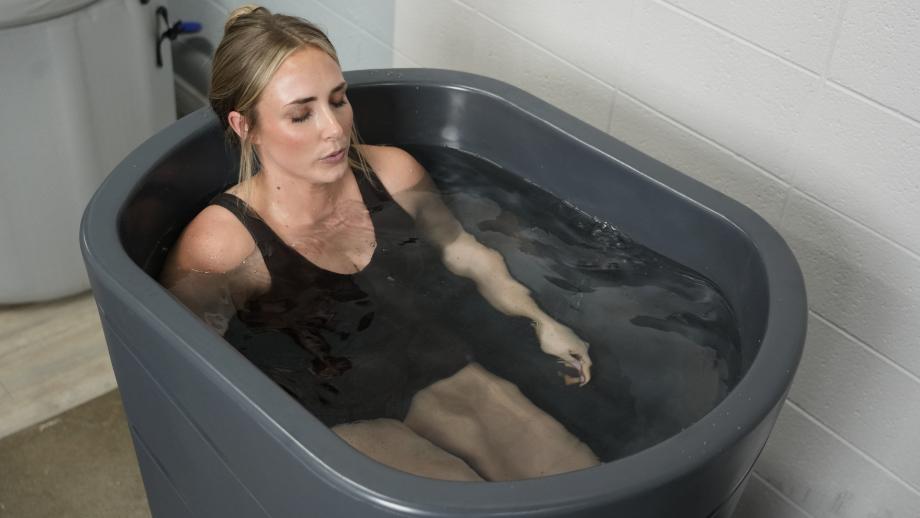
Both groups experienced improvements in pain relief, although there wasn’t a significant difference between the two groups. This shows the benefit of cold therapy, although it also suggests there may be no benefit to the extreme colds of cryo-chambers—another reason to call for more studies and research.
Cold exposure has also been shown to help reduce our perception of muscle pain and soreness2, too, when used in conjunction with meditative breathing, like the Wim Hof method.
Can Reduce Inflammation
One of the most well-known benefits of all cold therapy is the anti-inflammatory effect on the body. A 2017 review3 reiterates this, saying that consistent cryotherapy can provide an anti-inflammatory response by decreasing pro-inflammatory proteins and increasing anti-inflammatory proteins. This appears to have a greater effect on those with a higher fitness capacity, too.
Helps With Performance Recovery
Athletes may be able to see better recovery using cryotherapy. A clinical trial published in The Journal of Science and Medicine in Sport4 had 14 athletes (10 men, 4 women) cycle for 30 minutes, use cooling therapy for 10 minutes, and then finish with another 30-minute cycling routine, where the last 10 minutes were at maximal effort. Cyclists who cooled halfway through their workout tended to perform better than the control group on the max-effort workout at the end.
Another finding in the trial was that the whole-body cryotherapy could induce vasoconstriction, which is a narrowing of blood vessels. This makes muscles oxygenate better, which can speed up recovery and relieve soreness faster.
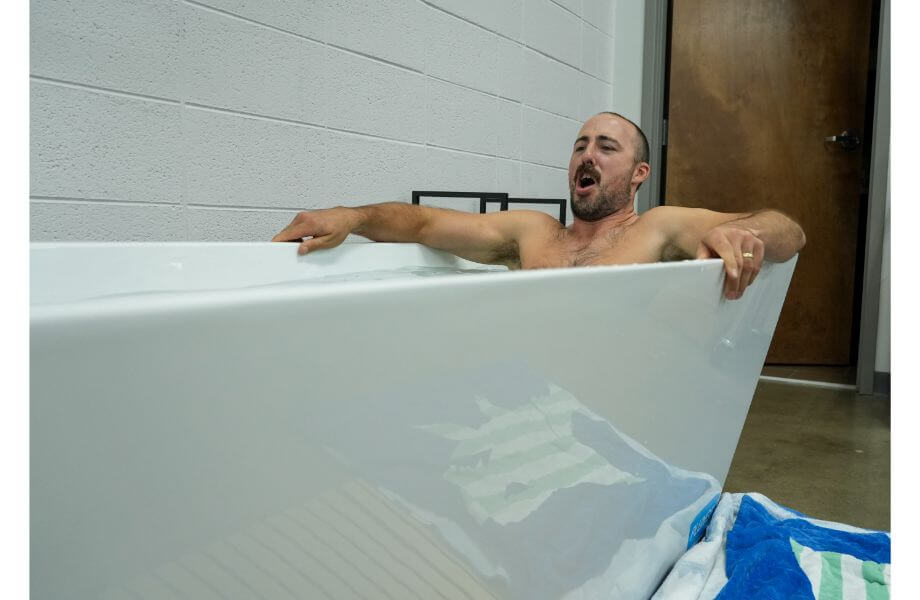
Helps With Immune Support
Cold therapy has been shown to help with your immune system health. One research study from 20105 showed that after 10 sessions of whole-body cryotherapy, users had a significant increase in their white blood cell count.
RELATED: How to Cold Plunge
Potentially Aids in Stress Relief
Cold therapy has been shown to have a hormonal response in the body, as well, which can help in relieving stress and improving mental health. A 2014 study of rugby players6 had them perform two daily cryotherapy sessions across a 7-day period. Several hormones were measured after each day; notably, cortisol levels—often related to stress levels—reduced after just the first day, while testosterone increased over the week-long trial.
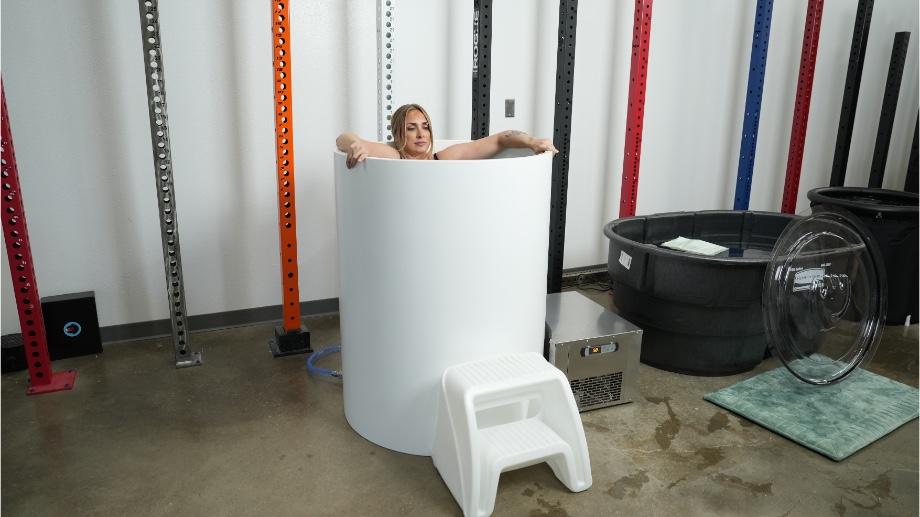
More research needs to be done, though, as another study from 20227 showed an increase in endorphins, but also an increase in cortisol levels. The study concluded that the hormonal response to cold exposure is still not fully understood.
Could Help With Skin Aging
I know it sounds a bit wild, but hear me out. Not only does cold therapy help with muscle soreness, but the therapy can also promote collagen production 8, which is necessary for skin health. (It’s also said that exposure to extreme cold can tighten your skin which will maintain your skin’s elasticity—although more research is needed to truly verify this.)
Could Help With Weight Loss
This is another benefit that needs more research, but cold exposure therapy has been linked to an increase in energy activity within brown adipose (fat) tissues, according to a February 2019 review9. The review also showed a correlation with increased metabolism, showing the potential to aid in weight loss.
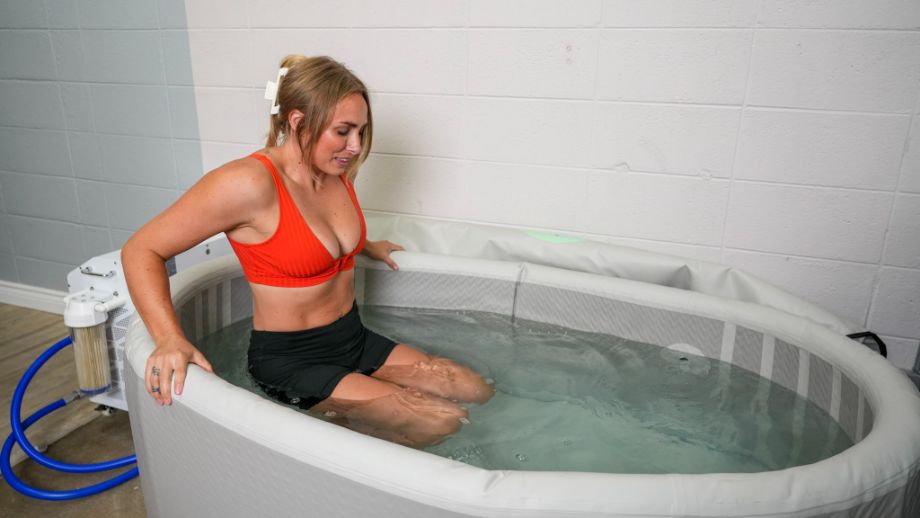
Differences Between Cryo-Chamber Therapy and Cold Plunges
While both methods of cold exposure share similar benefits, there are some differences between cryo-chambers and cold plunges.
- Exposure method: Cold plunges submerge the user in cold water to achieve whole-body cold exposure, but cryo-chambers chill the air in the chamber, using liquid nitrogen pumped into the walls of the cryo-chamber.
- Temperatures: Cryo-chambers claim to get the temperatures 200 degrees below freezing. Meanwhile, cold plunges approach, but never actually hit, freezing temperatures. They typically sit between 45 and 55 degrees Fahrenheit.
- Time: Cryo-chamber sessions are much faster than your typical ice bath, with the majority of them lasting no more than 3 minutes. However, cold plunges average about 10 or 12 minutes, or shorter depending on the temperature.
- Commute: You won’t be able to purchase a cryo-chamber easily for your home, as they’ll cost tons of money plus have high installation costs. So, most people will have to commute to a wellness center or commercial gym to use a cryo-chamber. On the other hand, you can also have ready access to an ice bath using your house’s bathtub and bags of ice.
- Prep: For a cold plunge, you’ll have to prepare the water for the right temperature first, either with a water chiller or ice bags. Afterward, you’ll also need to dry yourself and change clothes before going on about your day. With cryo-chambers, everything is prepared by the wellness center, and the experience is dry, meaning you won’t need a new change of clothes after.
RELATED: Should You Cold Plunge Before or After a Workout?
Risks of Cryo-Chamber Therapy
Because you’re exposing the body to extreme temperatures, there are potential risks involved in cold therapy, particularly with cryo-chambers and whole-body cryotherapy. These incidents are rare but still possible. Make sure to talk with a doctor before practicing cryo-chamber therapy.
The most common risk of whole-body cryotherapy is frostbite, which occurs when the skin, and sometimes lower tissue layers, freezes. While many cases are minor, there are a few that can cause burns10, and in extreme cases the skin may need to be excised and grafted for proper healing.
Other potential risks11 of whole-body cryotherapy can include the following, all of which have been reported at some point:
- Headaches or migraines
- Dizziness or discomfort
- Cold panniculitis (inflammation of fat tissue underneath the outer layer of skin)
- Cerebral bleeding
- Hypertension
- Long-lasting shivering
Many of the complications that occur have to deal with sudden cold shock and an increase in blood flow, so if you are dealing with any circulatory system issues at all, don’t use the extreme cold therapy of a cryotherapy chamber. Also, if you have poor circulation at your extremities—like your fingers or toes—that can increase your likelihood of frostbite. Additionally, anyone who’s claustrophobic may not like being in a cramped cryo-chamber for so long.
Risks of Cold Plunges
Cold water immersion, like cryo-chamber therapy, exposes the body to colder temperatures, and therefore poses some risks to users.
Most notably, an extended length of time in cold water can lead to hypothermia, which is an extreme drop in the body’s core temperature, leading to irregular heartbeats, passing out, or worse.
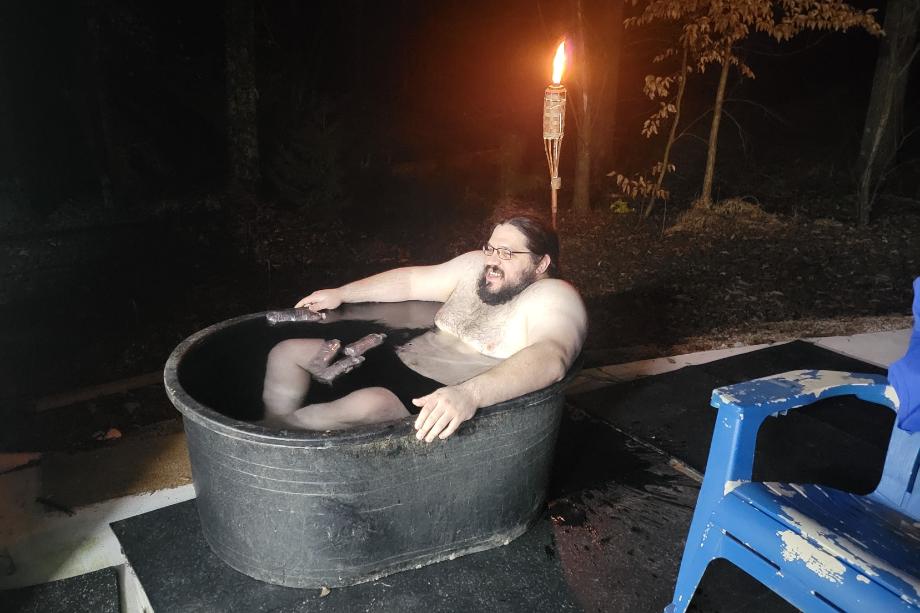
Another health risk from cold plunge tubs is cold shock, which can occur from the extreme temperature change that occurs when you step into the tub. This can lead to other issues, such as a rapid heart rate, hyperventilation, or hypertension (high blood pressure).
A best practice when using cold tubs is to acclimate to them, starting with short 1-minute sessions and lengthening the sessions gradually as you begin to grow accustomed to them. This will help reduce your risk of hypothermia and cold shock.
RELATED: Ice Bath vs Cold Shower
Choosing Between Cryotherapy and Cold Plunging
Many wellness centers tout that whole-body cryotherapy is better and more effective than cold plunges, but there is very limited research showing that one is better than the other. Both methods of recovery are lacking in research, although cold water immersion has been studied a bit more than cryo-chamber therapy.
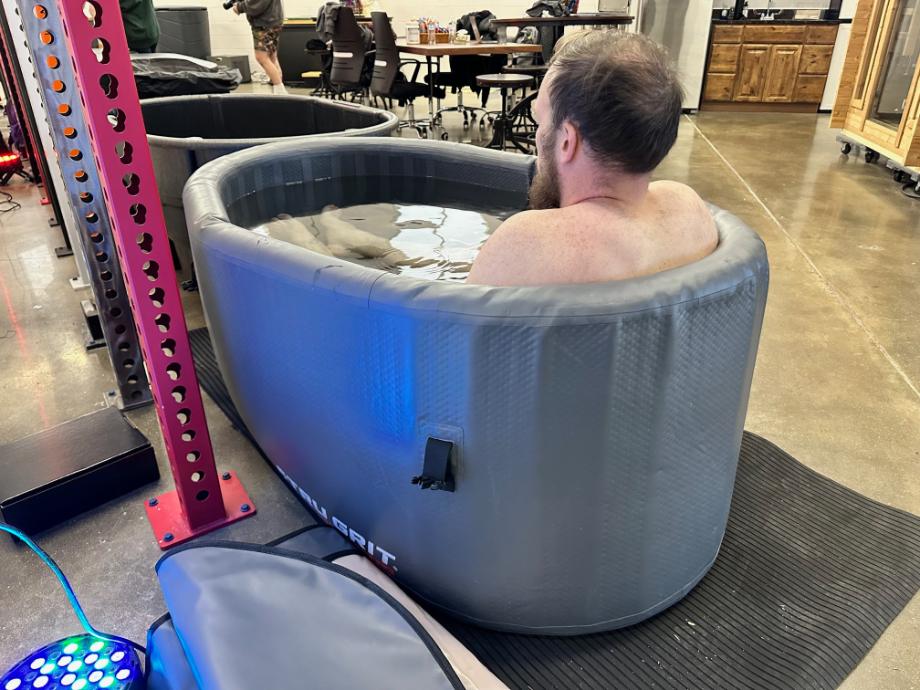
Both can be helpful in your recovery, but deciding which one is ideal will depend on a few things. If you want the convenience of recovery at home, an at-home cold tub is more ideal.
However, if you’re wanting a shorter session, cryo-chambers are right around 3 minutes, making them a much quicker session over cold plunge tubs.
Cryotherapy vs Cold Plunge: Final Thoughts
As an athlete, I’ve had much more experience with cold plunges, using them with a home sauna or hot tub for contrast baths. However, both cryotherapy and cold plunges can provide similar benefits to sore muscle tissue and inflammation (although, as I’ve said a few times before, we’re just scratching the surface on testing these specific recovery methods).
Which one is best for you will depend on your goals and what you’re looking for in convenience. A cold tub can be conveniently placed in your home, but will require some upkeep—even a premium cold plunge. A cryo-chamber will require you to drive to it, but the prep and maintenance is all done by a wellness center. Both have their benefits, their conveniences, and potential risks and downsides.
Cryotherapy vs Cold Plunge: FAQs
Is cold water immersion the same as cryotherapy?
Cold water immersion is different from whole-body cryotherapy done in a chamber. Cold water therapy uses near-freezing water to expose the body to low temperatures, while cryo-chambers create cold air by pumping liquid nitrogen into the walls of the chamber. Nevertheless, the body responds similarly to both types of cold therapy.
Is an ice bath as effective as cryotherapy?
Both ice baths and cryotherapy are effective methods to aid in muscle recovery and perceived muscle soreness, and both have been shown to relieve chronic back pain. However, a cryotherapy session is much shorter than a cold plunge. Additionally, you’ll have to drive to most cryo-chambers, whereas cold plunges can be purchased for home use.
Does cryotherapy help with weight loss?
A review from 20199 showed a correlation between cold therapy and an increase in metabolism, and energy activity in brown fat cells. While more research needs to be done to come to a firmer conclusion, these initial findings suggest that cold therapy may be able to aid in weight loss and fat burning.
References
- Nugraha, B., Günther, J. T., Rawert, H., Siegert, R., & Gutenbrunner, C. (2015). Effects of whole body cryo-chamber therapy on pain in patients with chronic low back pain: a prospective double blind randomised controlled trial. European journal of physical and rehabilitation medicine, 51(2), 143–148.
- Zwaag J, Timmerman H, Pickkers P, Kox M. Modulation of Pain Sensitivity by a Hyperventilatory Breathing Exercise and Cold Exposure Training. J Pain Res. 2023;16:1979-1991 https://doi.org/10.2147/JPR.S400408
- Lombardi, G., Ziemann, E., & Banfi, G. (2017). Whole-Body Cryotherapy in Athletes: From Therapy to Stimulation. An Updated Review of the Literature. Frontiers in physiology, 8, 258. https://doi.org/10.3389/fphys.2017.00258
- Hornery, D. J., Papalia, S., Mujika, I., & Hahn, A. (2005). Physiological and performance benefits of halftime cooling. Journal of science and medicine in sport, 8(1), 15–25. https://doi.org/10.1016/s1440-2440(05)80020-9
- Lubkowska, A., Szygula, Z., Klimek, A. J., & Torii, M. (2010). Do sessions of cryostimulation have influence on white blood cell count, level of IL6 and total oxidative and antioxidative status in healthy men?. European journal of applied physiology, 109(1), 67–72. https://doi.org/10.1007/s00421-009-1207-2
- Grasso, D., Lanteri, P., Di Bernardo, C., Mauri, C., Porcelli, S., Colombini, A., Zani, V., Bonomi, F. G., Melegati, G., Banfi, G., & Lombardi, G. (2014). Salivary steroid hormone response to whole-body cryotherapy in elite rugby players. Journal of biological regulators and homeostatic agents, 28(2), 291–300.
- Barłowska-Trybulec, M., Zawojska, K., Szklarczyk, J., & Góralska, M. (2022). Effect of whole body cryotherapy on low back pain and release of endorphins and stress hormones in patients with lumbar spine osteoarthritis. Reumatologia, 60(4), 247–251. https://doi.org/10.5114/reum.2022.119040
- Dalkowski, A., Fimmel, S., Beutler, C., & Zouboulis, C.hC. (2003). Cryotherapy modifies synthetic activity and differentiation of keloidal fibroblasts in vitro. Experimental dermatology, 12(5), 673–681. https://doi.org/10.1034/j.1600-0625.2003.00015.x
- Peres Valgas da Silva, C., Hernández-Saavedra, D., White, J. D., & Stanford, K. I. (2019). Cold and Exercise: Therapeutic Tools to Activate Brown Adipose Tissue and Combat Obesity. Biology, 8(1), 9. https://doi.org/10.3390/biology8010009
- Ellis, R. C., Kohler, C. L., & Dvorak, J. E. (2022). Cryotherapy Induced Burns: A Case Series of Three Patients. Journal of burn care & research : official publication of the American Burn Association, 43(3), 746–748. https://doi.org/10.1093/jbcr/irac027
- Legrand, F. D., Dugué, B., Costello, J., Bleakley, C., Miller, E., Broatch, J. R., Polidori, G., Lubkowska, A., Louis, J., Lombardi, G., Bieuzen, F., & Capodaglio, P. (2023). Evaluating safety risks of whole-body cryotherapy/cryostimulation (WBC): a scoping review from an international consortium. European journal of medical research, 28(1), 387. https://doi.org/10.1186/s40001-023-01385-z
Further reading

Our Factor meals review takes an in-depth, critical look at this popular meal delivery service, with insights from a registered dietitian. Read more

Feeling overwhelmed by the endless options for protein supplements? A registered dietitian gives you expert tips on what to look for in protein powder. Read more

Our 5 interval training workouts designed by a certified personal trainer (CPT) can help improve your cardio fitness and support weight loss. Learn more now! Read more

Our experts help you find the best water rowing machine for home gyms based on budget, programming, durability, and more. Read more

